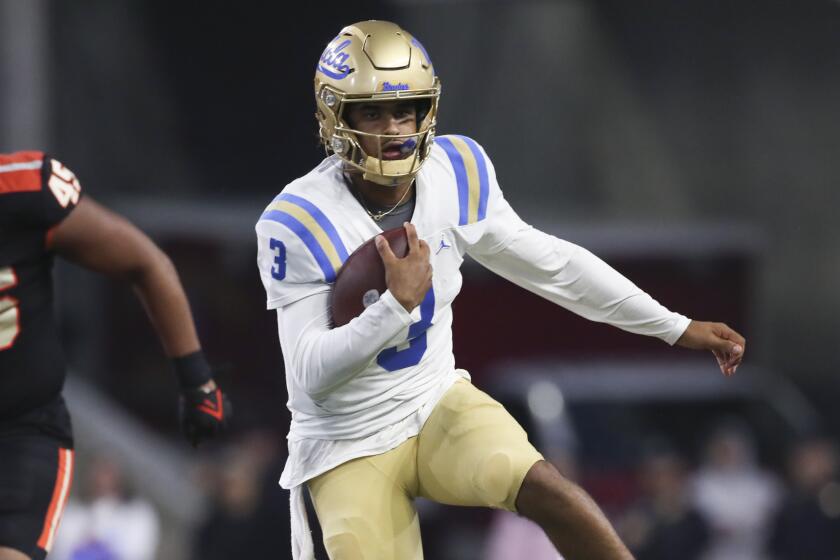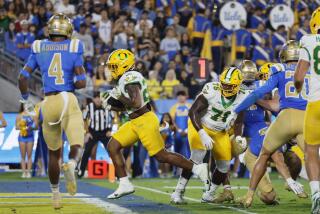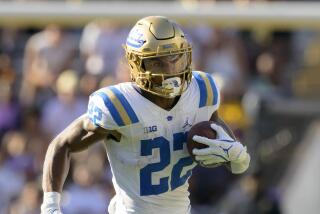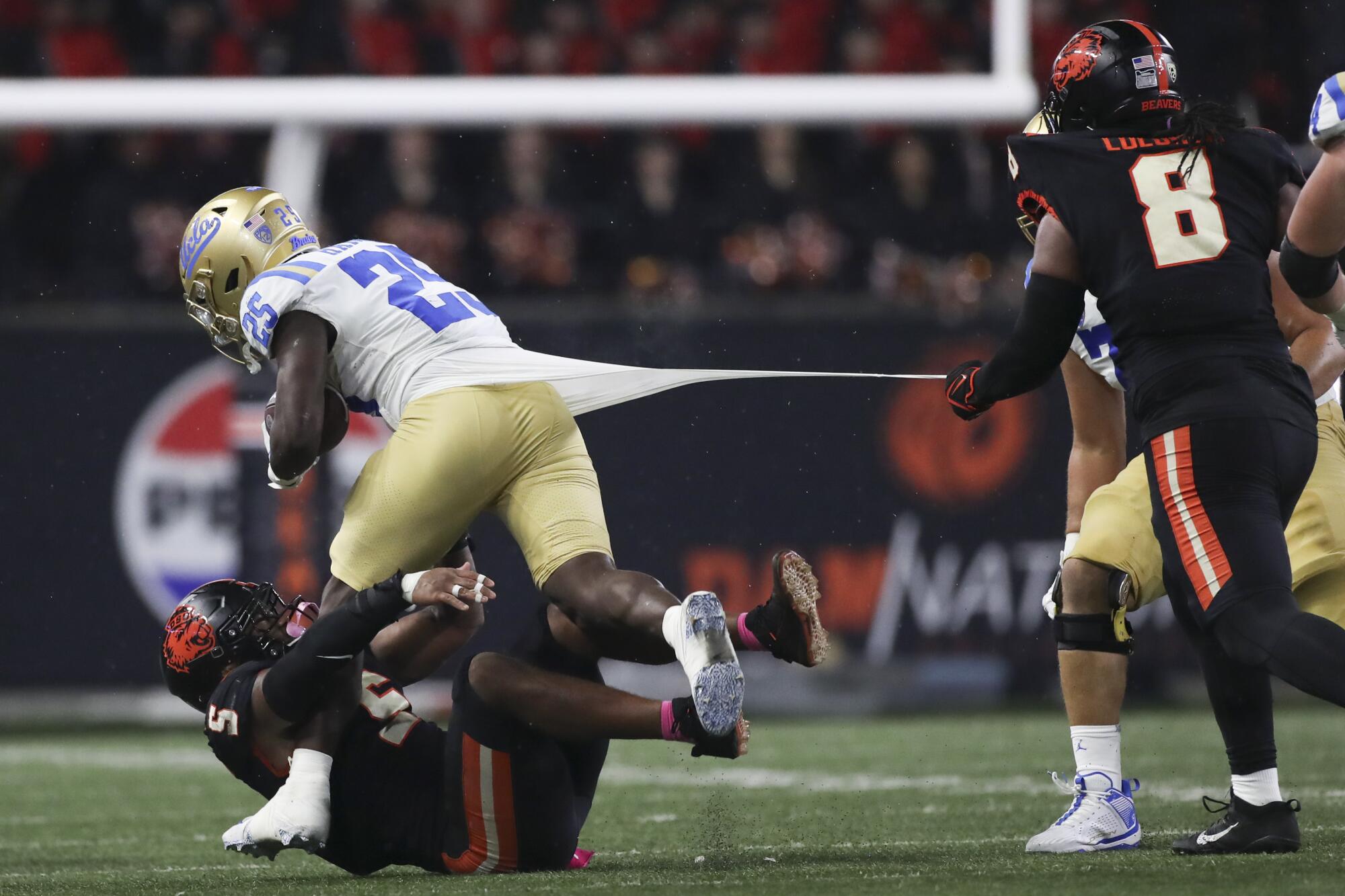
The big tease rolls on.
In Year 6, with his best defense and deepest team, UCLA coach Chip Kelly once again briefly raised expectations before going splat in his old home state.
His overreliance on a talented but understandably raw freshman quarterback probably cost the Bruins a chance at beating Utah and Oregon State.
Now, after UCLA’s 36-24 loss to the Beavers on Saturday night at Reser Stadium, the Bruins have considerable work to do just to secure a spot in something along the lines of the Las Vegas Bowl.
Here are five takeaways from a defeat that dropped UCLA (4-2 overall, 1-2 Pac-12) into a tie for seventh place in the conference standings:
Too stubborn?
Kelly might be having his worst coaching season since his arrival in Westwood.
His lack of accounting for a spotty offensive line in the Utah game by utilizing rollouts and quick passes for a quarterback playing in his first Pac-12 game against an attacking defense was stunning.
On Saturday, the issue was not running enough early in the game against a defense that had given up 241 yards on the ground to California.
Quarterback Dante Moore continued to struggle with pick-sixes and knowing when to get rid of the ball in No. 18 UCLA’s 36-24 loss to No. 15 Oregon State.
Kelly called for nine passing plays versus five runs in the first quarter against Oregon State. Two of quarterback Dante Moore’s passes were intercepted, and the Beavers mounted a 13-0 lead, which was essentially the difference in a 12-point victory.
Over the final three quarters, Kelly called for 26 passes and 40 runs — a much smarter balance of plays. The Bruins ran for 252 yards in that span. Too bad they didn’t hit the ground running from the opening kickoff.
A new quarterback quandary
One thing Kelly did well Saturday was mix in some packages for veteran quarterback Collin Schlee, who ran six times for 80 yards.
But Schlee appeared to take a blow to the sternum on his final run in the third quarter, a 28-yard sprint to Oregon State’s nine-yard line. Running back TJ Harden ran for a touchdown on the next play, and Schlee never returned.
His injury leaves his status in doubt at a time when the Bruins could really use him as a triple-threat quarterback — someone who can run, pass and give Moore a needed breather.
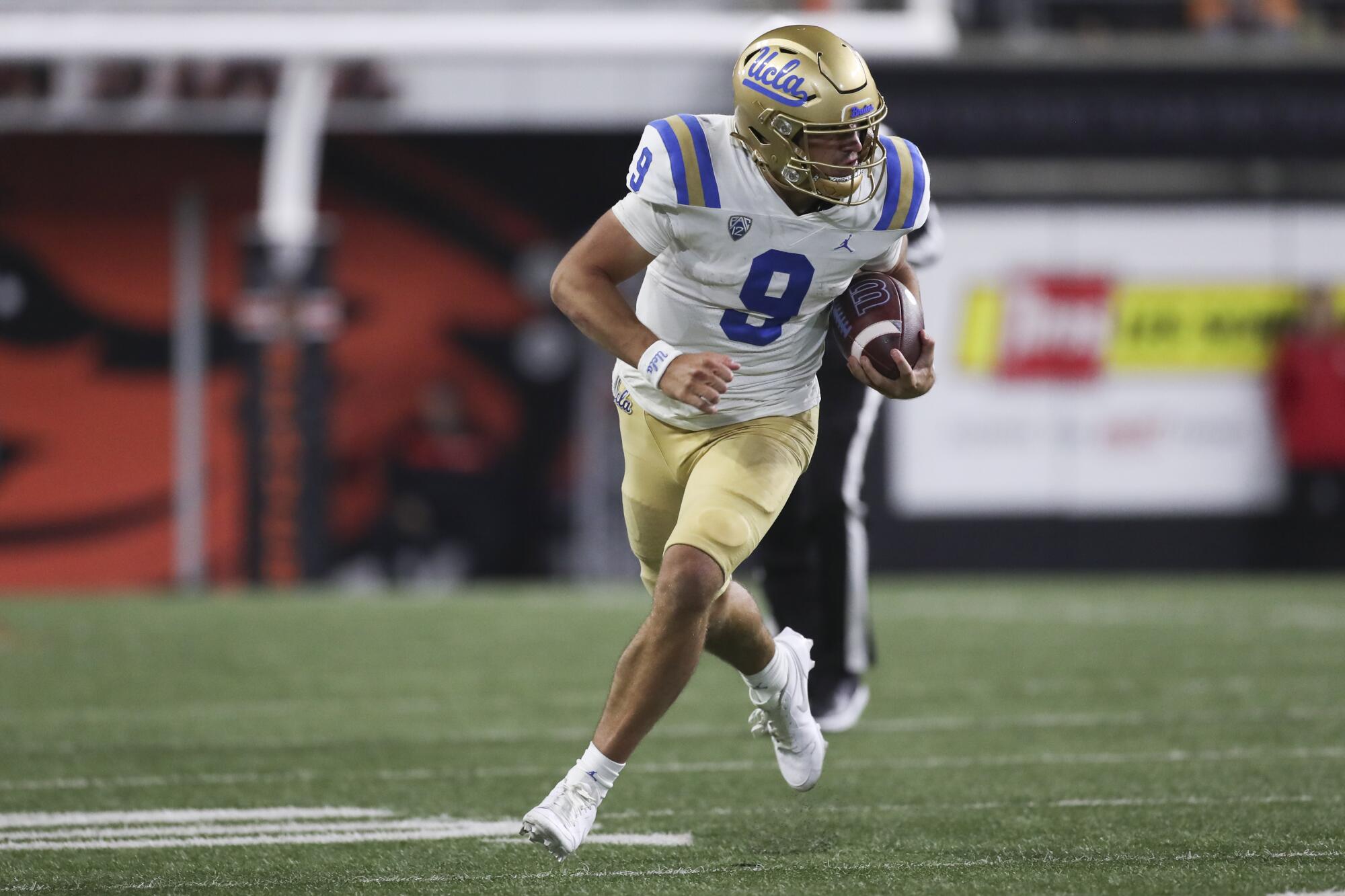
Ethan Garbers, who has not played since being the holder for the extra point in the Utah game, appeared on track to use a redshirt season before Schlee went down. If Schlee is sidelined for an extended period, Garbers might have to revisit those plans unless the Bruins want to go with redshirt freshman Justyn Martin as the next quarterback in line.
Making his point
Had they completed a two-point conversion after Harden’s touchdown with seven minutes left in the third quarter, the Bruins would have been down 11 points. That gap would have allowed them to tie the score with a touchdown and two-point conversion plus a field goal.
Kelly said he went for the extra point instead of the two-point conversion because of “analytics.”
“The one thing when you look at going for two and not going for two is getting the two isn’t guaranteed either,” Kelly said, “but our analytics told us by the amount of possessions [left] that we should have kicked it.”
Those analytics didn’t help the Bruins midway through the fourth quarter when, trailing by 12 points instead of 11, they had to go for it on fourth and 18 from Oregon State’s 26-yard line instead of trying a 43-yard field goal.
Moore was sacked for a four-yard loss, and the Bruins turned it over on downs.
Defensive doldrums
This was the first dud for UCLA’s revived defense.
Unable to consistently apply pressure to the quarterback or shut down the run game, the Bruins gave up season highs in points and yards (415) while generating only two sacks.
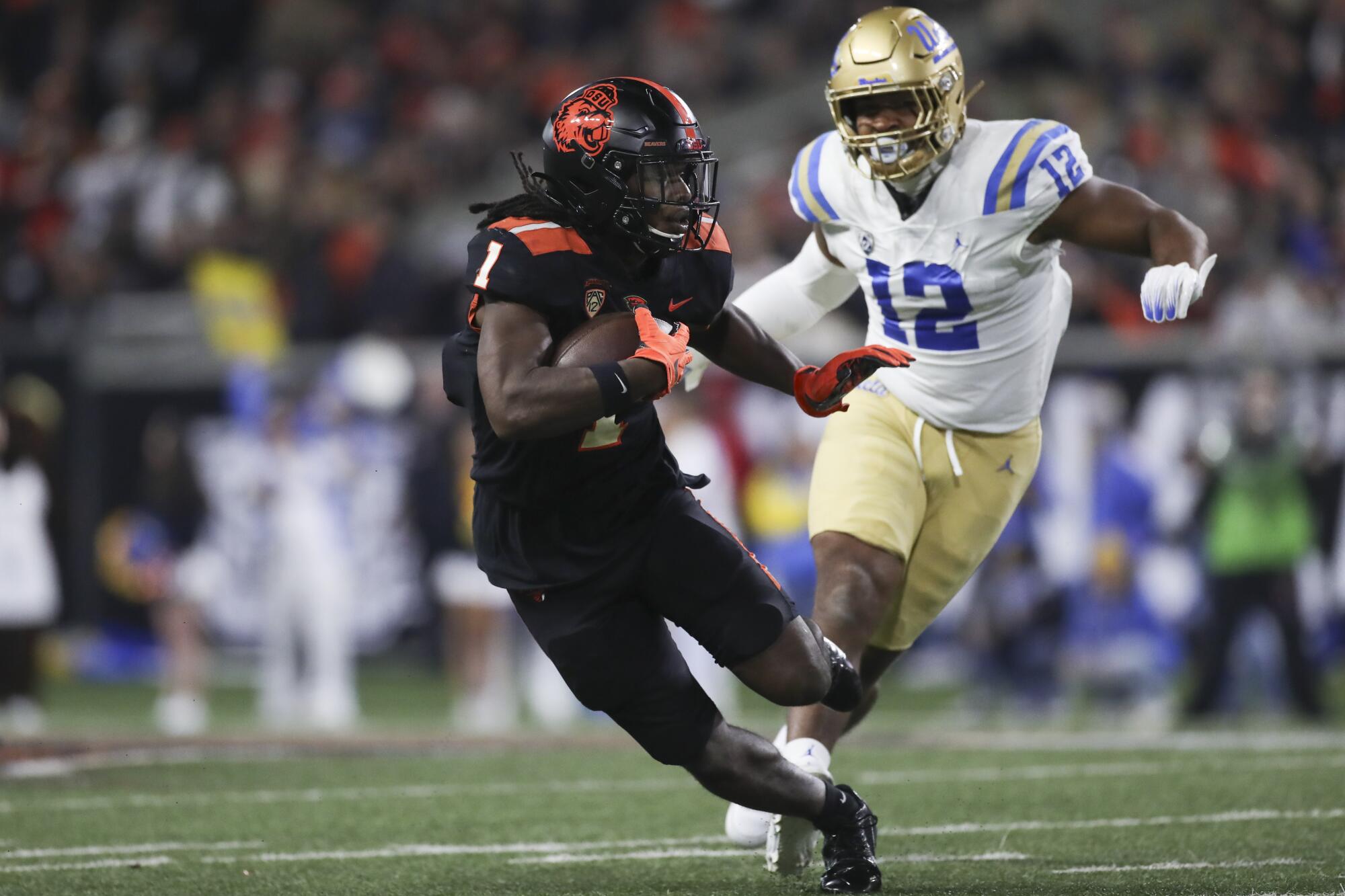
The biggest issue was big plays, Oregon State piling up too many because of blown coverages. Beavers quarterback D.J. Uiagalelei looked every bit like the five-star prospect he was purported to be coming out of St. John Bosco High, throwing for 266 yards and two touchdowns with no interceptions.
“There were too many deep balls today,” Kelly said.
A steep climb
Barring a miraculous turnaround, UCLA’s 25-year Pac-12 title drought will extend for one more season before the Bruins head for the Big Ten.
Now tied with Washington State for seventh in the conference standings, UCLA probably has to win the rest of its games and hope some others break its way to have any chance of making the Pac-12 title game.
Those holding out hope will note that every Pac-12 team could have at least one conference loss after USC plays Washington on Nov. 4. The Bruins might have to root for the Trojans in that game since they don’t play the unbeaten Huskies this season.
UCLA’s schedule lightens considerably from here until the cross-town showdown against USC on Nov. 18. None of the Bruins’ next four opponents — Stanford, Colorado, Arizona and Arizona State — are ranked and all will probably be underdogs with the possible exception of the Wildcats, who will host UCLA in Tucson on Nov. 4.
More to Read
Go beyond the scoreboard
Get the latest on L.A.'s teams in the daily Sports Report newsletter.
You may occasionally receive promotional content from the Los Angeles Times.

